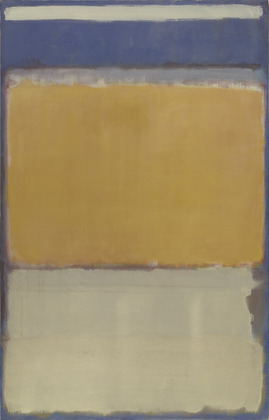No 10, 1950
No. 10. is Mark Rotho's creation of an artistic piece in 1950, post the Second World War. It may be a smoldering piece, yet it's still luminescent and comes alive with the palette mix of pinks, reds, smoky umbers, and hints of yellow.
His New Painting Methods
Between 1949 and 1950, Rothko refined the compositional frameworks of his previous, surrealist-inspired compositions to arrive at what might represent his signature style. Here, in No. 10., he fragmented the canvas horizontally into a trio of dominant planes which softly blend through each other, their broad passages of cool and warm colours producing a subtly pulsing landscape. Rothko intended his paintings to awaken audiences to the emotions of humans. He wanted viewers to get close enough to his paintings to relate to them. To engulf themselves in his compositions and immerse themselves in the emotions that his compositions evoked and expressed.
The Inspiration Behind The Creation
The asymmetrical patches of pigment characterized by the artists' multiform creations, as seen in this piece, No. 10., give the impression of settling. Rothko explains that the developments of a painter's work from time to time will be directed towards clarity. The focus will be on the removal of all barriers between the idea, the painter, and the canvas; and between the idea, the final creation, and the observer.
The Technique Used To Create No. 10
Mark Rothko's No. 10 is painted when he is at the peak of his creative and vital accomplishments and is the culmination of his alchemical prowess. Rothko is able to make a painting that seems to glow with supreme luminosity, a product of a painting surface that glimmers with painterly energy using the most essential artistic materials—canvas, pigments, and oil. By 1958 he had reduced the vibrancy of his work. This shift caused an ominous and austere palette to appear, starting what many considered one of the most important periods in his artistic creations.
No. 10 highlights Rothko's abundance and range of color in the thin sliver of paint shops that takes place towards the middle of the canvas. The artist shows a unique variety of subtle but nearly blurry passages of pinks, reds, ochers, umbers, and yellows in this intensely workable region that constantly moves under a human being's gaze. His long, deliberate process resulted in the surface tension of this painting. Rothko stages a variety of proceedings around the vast canvas board, in which ground and edge interact. Nuancing and contrasting are the hues and textures are objected and merged.

